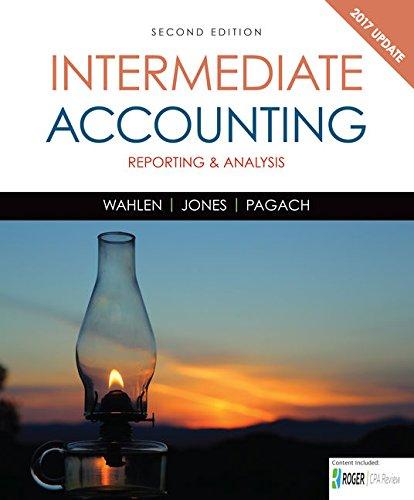
a.
Determine the table from which amount required can be obtained most directly from the table for each of the given situations.
a.
Explanation of Solution
Situation 1: Accumulated amount from an investment of a single sum (present value) at a specified interest at the end of the specific period can be determined using the Amount from Table C (future value of $1).
Situation 2: Whenever there is an equal
Situation 3: To withdraw an equal amount of money annually at the end of each time period, a deposit must be made at present. Hence, the deposit amount can be determined by using Table E (it shows the present value of an ordinary annuity of $1)
Situation 4: Table C must be used to determine the future value of a single sum at a compounded interest by the end of a certain future period.
Situation 5: When a large amount due has to be settled at a specified future date, it can be discounted at a specified interest rate for the given time period and the balance amount can be paid at present date. Hence, Table A should be used to know the amount has to be paid at present date.
b. 1.
Determine the number of full $2,500 payment is required and determine the amount of required final payment.
b. 1.
Answer to Problem 10P
Client has to pay $2,500 each for first 6 years, and the amount of last payment will be $1,282.07
Explanation of Solution
Now, determine how many deposits of $2,500 have to be made by the client at the end of each year to accumulate $22,500.
While looking at 10% column in the future value of an ordinary annuity of $1 table (at the end of the time value money module), it is observed that the factor of 9.000000 is available between 6th and 7th cash flow. Here, it is necessary to consider only less number of cash flow that is 6, thereby the client can pay $2,500 each for 6 years, and as 7th payment the client can pay an amount of fund (less than $2,500) require to accumulate $25,500.
Hence, the client has to pay $2,500 each for 6 years.
Determine the amount of final payment (7th payment).
To determine the amount of the final payment, first calculate the future value of an annuity due of 6 payments of $2,500 at 10%.
Note: Future value of ordinary annuity of $1: n = 7, i =10% is taken from the table value (Table 2 at the end of the time value money module). There is no separate table provided in this module for future value of annuity due. Thus, factor of annuity due is calculated with the help of ordinary annuity table.
Now, determine the amount of final payment.
Hence, the amount of last payment will be $1,282.07.
b. 2.
Determine the amount to be deposited on July 1, 2019.
b. 2.
Answer to Problem 10P
An amount of $5,263.25 required to be deposited as an initial payment on July 1, 2019.
Explanation of Solution
Calculate the deficiency at the end of 7 years.
Note: Future value of ordinary annuity of $1: n = 7, i =10% is taken from the table value (Table 2 at the end of the time value money module).
Determine the amount of required initial deposit.
Hence, an amount of $5,263.25 required to be deposited as an initial payment on July 1, 2019.
Note: Present value of $1: n = 7, i =10% is taken from the table value (Table 3 at the end of the time value money module).
Want to see more full solutions like this?
Chapter M Solutions
Cengagenowv2, 1 Term Printed Access Card For Wahlen/jones/pagach’s Intermediate Accounting: Reporting And Analysis, 2017 Update, 2nd
- I need help with this general accounting question using the proper accounting approach.arrow_forwardPlease explain the solution to this general accounting problem with accurate explanations.arrow_forwardI need guidance with this general accounting problem using the right accounting principles.arrow_forward
- Please provide the answer to this general accounting question with proper steps.arrow_forwardCan you explain the correct methodology to solve this general accounting problem?arrow_forwardI am trying to find the accurate solution to this general accounting problem with appropriate explanations.arrow_forward
 Intermediate Accounting: Reporting And AnalysisAccountingISBN:9781337788281Author:James M. Wahlen, Jefferson P. Jones, Donald PagachPublisher:Cengage LearningPrinciples of Accounting Volume 1AccountingISBN:9781947172685Author:OpenStaxPublisher:OpenStax College
Intermediate Accounting: Reporting And AnalysisAccountingISBN:9781337788281Author:James M. Wahlen, Jefferson P. Jones, Donald PagachPublisher:Cengage LearningPrinciples of Accounting Volume 1AccountingISBN:9781947172685Author:OpenStaxPublisher:OpenStax College

